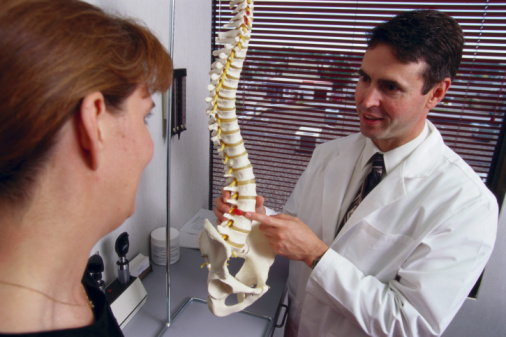Patient FAQs
Chiropractic is a health care profession that focuses on disorders of the musculoskeletal system and the nervous system, and the effects of these disorders on general health.
Chiropractic returns the body to balance through adjustments of the spine and joints, normalizing joint motion, reducing nerve interference, relieving stress and restoring normal body function. Whenever there is a system containing many movable parts, a complex balance is necessary between those parts. Chiropractors influence the body’s nervous system and natural defense mechanisms in order to alleviate pain and improve general health.
Chiropractic care is used most often to treat neuromusculoskeletal complaints, including but not limited to back pain, neck pain, pain in the joints of the arms or legs, and headaches.
Doctors of Chiropractic – often referred to as chiropractors or chiropractic physicians – practice a drug-free, hands-on approach to health care that includes patient examination, diagnosis and treatment. Chiropractors have broad diagnostic skills and are also trained to recommend therapeutic and rehabilitative exercises, as well as to provide nutritional, dietary and lifestyle counseling.
In many cases, such as lower back pain, chiropractic care may be the primary method of treatment. When other medical conditions exist, chiropractic care may complement or support medical treatment by relieving the musculoskeletal aspects associated with the condition.
Doctors of chiropractic may assess patients through clinical examination, laboratory testing, diagnostic imaging and other diagnostic interventions to determine when chiropractic treatment is appropriate or when it is not appropriate. Chiropractors will readily refer patients to the appropriate health care provider when chiropractic care is not suitable for the patient’s condition, or the condition warrants co-management in conjunction with other members of the health care team.
Find a Doctor
Patient FAQs
Is Chiropractic Safe?
YES. Its non-surgical, drug-free approach to health places chiropractic among the safest of all health care practices. Remember, chiropractic takes nothing out of the body and puts nothing in. As a result, chiropractors enjoy one of the lowest malpractice rates of all health care professionals.
What is an Adjustment?
A chiropractic adjustment is a way of applying a specific force in a precise direction to a joint that is fixated or not moving properly, this is delivered by hand or instrument. The purpose of the adjustment is to correct any spinal subluxations therefore improving spinal function, nervous system function, and overall general health. Some adjusting methods are quick, whereas others require a slow and constant pressure, but all are designed to correct spinal subluxations thus removing the nerve interference in the body.
What is a Subluxation?
A misalignment of one or more of your spinal bones (vertebrae), which causes interference to your nervous system. If your nervous system is interfered with, your body’s natural ability to heal itself & function at it’s optimum potential becomes impaired. A subluxation is a perfect example of how structure effects function.
Questions about Neck Manipulation?
Chiropractic is widely recognized as one of the safest drug-free, non-invasive therapies available for the treatment of back pain, neck pain, joint pain of the arms or legs, headaches, and other neuromusculoskeletal complaints.
Although chiropractic has an excellent safety record, no health treatment is completely free of potential adverse effects. The risks associated with chiropractic, however, are very small. Many patients feel immediate relief following chiropractic treatment, but some may sometimes experience mild soreness or aching (similar to what they experience after some forms of exercise), headaches and tiredness.
Some articles in the media have linked one of the therapies that doctors of chiropractic, osteopaths and physical therapists provide–neck manipulation (also known as cervical manipulation)—with a certain rare type of stroke that results from a vertebral artery dissection (a tear in one of the arteries located at the base of the skull). A neck adjustment is a precise procedure, usually applied by hand, to the joints of the neck–your doctor of chiropractic has received extensive training to perform this procedure. It is important for health care consumers to understand that the largest research study on this issue shows there is no cause-and-effect relation between neck manipulation and stroke, and that patients visiting a doctor of chiropractic are no more likely to experience a stroke compared with patients visiting their primary care medical doctor.
I’m Not Sick, Should I See a Chiropractor?
Yes. Symptoms are not a good way to judge health. They sometimes surface after years of body malfunction.
How Long Does it Take for Chiropractic to Work?
It depends upon your overall health and amount of time you have suffered from a condition. Many patients usually feel improvements within a short period of time. Once the condition has been resolved, patients benefit from regular checkups helping to detect and resolve new problems, or recurrences of old ones, before they become serious.
What Can I Expect on my First Visit?
Your initial visit will begin with a consultation. Your doctor will take a case history and ask about your present condition. Next, the doctor will perform an examination to evaluate the nature of your problem. This examination generally includes a series of basic physical tests, as well as a specialized chiropractic evaluation of spinal movement and posture.
If necessary, your doctor may recommend X-rays or diagnostic tests to obtain further information about the mechanics of your spine and the details of your condition. After completing the analysis, your doctor will explain your problem and map out an appropriate plan of action with you. If necessary, you may be referred to another health care specialist for further evaluation or treatment. Doctors of chiropractic work with a variety of health care professionals in the best interest of their patients.
Your doctor will discuss your care plan with you, taking into consideration your health habits, stress, and activity levels. Over the course of your care, your doctor will monitor your individual response and may also recommend changes to your lifestyle, work environment, dietary, and exercise patterns.
